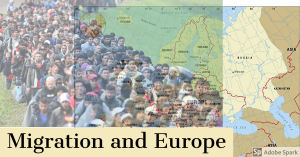
According to the International Rescue Committee, the US will only resettle 21,292 refugees in the current fiscal year.īy contrast, some of the world’s poorer and often less stable countries – such as Jordan, Lebanon, Pakistan and Uganda – are now the long-term hosts to the world’s largest populations of refugees. Later in 2017, however, the new president, Donald Trump, slashed the cap to 45,000. That same year, the then-president, Barack Obama, committed to resettling 110,000 refugees in the 2017 fiscal year, a 57% increase from 2015 numbers. The US has historically resettled more refugees than all other countries in the world combined, though in recent years, its intake has slowed. And which countries take and produce the most refugees? Nearly half of all international migrants came from Asia, although it is still far more common for Asians and Africans to move within their own continent than to settle further afield. India, Mexico, Russia, China and Bangladesh were the top five origin countries. The US has about 46 million foreign-born residents, Germany about 12 million. Which countries produce – and which receive – the most migrants?Īccording to the IOM, the US, Germany, Russia, Saudi Arabia and the UK were the top five destinations for migrants in 2015. About 5 million Britons are thought to do so.įinally, there are 10 million people who are stateless, with no citizenship at all. The state department reckons 9 million Americans live overseas. In total, at least 66 million people globally are experiencing forced displacement – approximately 40.3 million of whom are IDPs.Īs for expats, estimates vary wildly, depending on definition. But registered refugees represent only a fraction of all those forced to leave their homes for reasons spanning from war to environmental crisis. There were 25.9 million refugees and asylum seekers in mid-2017.
#HOW MANY IMMIGRANTS DOES THE US TAKE IN EACH YEAR FULL#
The latest revised projection is that there will be 405 million international migrants by 2050.Įven those figures, however, fail to capture the full reality. That is both a record high – there were 173 million in 2000 – and an alarmingly volatile figure: a 2003 projection anticipated that by 2050, there would be up to 230 million international migrants. About 258 million people, or one in every 30, were living outside their country of birth in 2017. We are now witnessing the highest levels of movement on record. In practice, expat has come to mean a migrant from a rich country. The International Organization for Migration (IOM) therefore defines a migrant as any person who is moving or has moved across an international border or within a state regardless of legal status, whether the movement is voluntary or involuntary, what the causes for the movement are, and what the length of the stay is.Įxpatriate is a weakly defined term that essentially means anyone living outside their native country. But if that person is leaving the penury and starvation of a dustbowl farm in the Sahel in order to survive, are they a migrant or a refugee? Some presume a migrant is on the move to seek a better life. When it comes to migrants, definitions are far woollier. Internally displaced people (IDPs) are essentially on the run in their own country: putative refugees who have not been able or willing to cross an international border. Refugees have the right to international protection while seeking asylum is a human right, which means everyone should be allowed to enter another country to seek asylum. A refugee has already received such protection.

An asylum seeker has left their country and is seeking protection from persecution. According to the 1951 United Nations refugee convention, the difference between refugees and asylum seekers is clear.


 0 kommentar(er)
0 kommentar(er)
